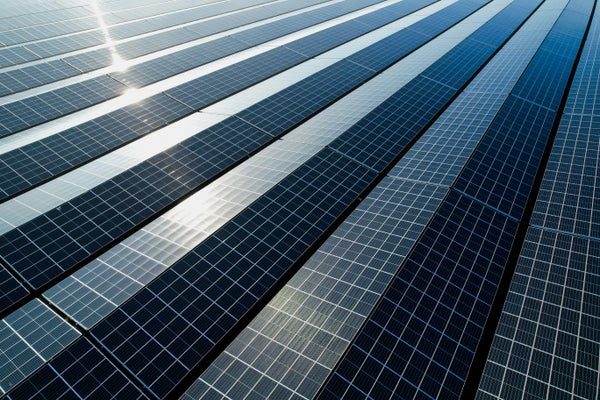How the Solar Eclipse Will Impact Electricity Supplies
This April’s total solar eclipse will present a unique challenge to power grid operators because of the decline in solar power generation
Daniel Bosma/Getty Images
The following essay is reprinted with permission from ![]() The Conversation, an online publication covering the latest research.
The Conversation, an online publication covering the latest research.
During the most recent total solar eclipse visible in the U.S., on Aug. 21, 2017, the skies darkened as the Moon crossed in front of the Sun. It blocked out all sunlight – except for that from a golden ring visible around the Moon’s shape, called the corona. Not surprisingly, solar power generation across North America plummeted for several hours, from the first moment the Moon began to obscure the Sun to when the Sun’s disk was clear again.
On April 8, 2024, another total solar eclipse will track across the U.S., causing perhaps an even greater loss of solar power generation. Although this will be the second total solar eclipse visible in the U.S. in under seven years, these events are a rare occurrence. Nevertheless, they present a unique challenge to power grid operators.
On supporting science journalism
If you’re enjoying this article, consider supporting our award-winning journalism by subscribing. By purchasing a subscription you are helping to ensure the future of impactful stories about the discoveries and ideas shaping our world today.
I am a space scientist with a passion for teaching physics and astronomy. Though I have seen many partial eclipses of the Sun, I have yet to witness a total solar eclipse. My road trip to Bryce Canyon National Park in Utah in October 2023 to see the “ring of fire” annular solar eclipse was unforgettable, and April 8 will surely find me handing out eclipse glasses once again.
When the Moon’s shadow blocks the Sun
During a solar eclipse, the Moon partially or completely blocks the view of the Sun. Since the Moon is nearly 400 times…
Read the full article here







